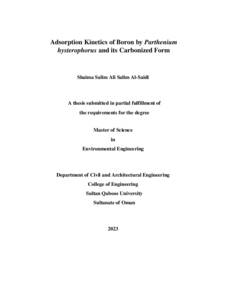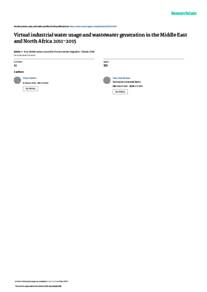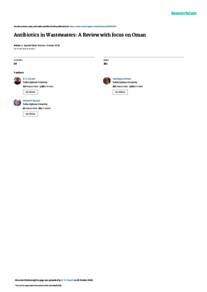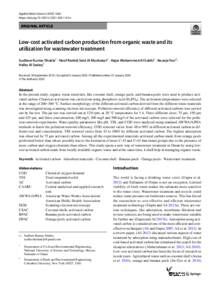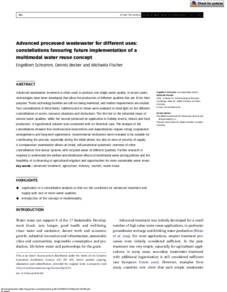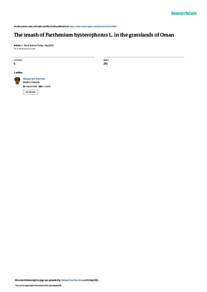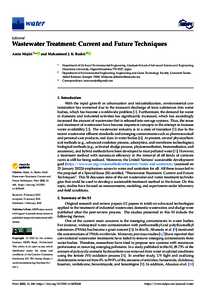Document
Adsorption kinetics of boron by parthenium hysterophorus and its carbonized form.
Publisher
Sultan Qaboos University.
Gregorian
2023
Language
English
English abstract
The Parthenium hysterophorus is an invasive plant that can be found in abundance throughout
Oman. Besides its rapid growth rate, it poses allelopathic characteristics that have been showing
enormous hazardous risk impacts to human, animal, soil, agriculture, and the environment due to
its allelopathic characteristics. A buildup of this weed can have severe environmental and
economic impacts, and it is difficult to control and eliminate. Furthermore, boron is a pollutant
found in a variety of water sources, including groundwater, surface water, and effluents. Boron
concentrations in potable water can adversely affect human health, including reproductive and
developmental issues. Due to its solubility and toxicity, removing boron from contaminated water
is such a challenging task. Reverse osmosis and ion exchange are currently used to remove boron
from contaminated water. However, these techniques are expensive and energy-intensive, making
it necessary to develop a more sustainable, cost-effective, and effective procedure. A number of
recent studies have demonstrated that P. hysterophorus is an effective adsorbent for a variety of
contaminants, including heavy metals, pigments, and pesticides. However, limited research has
been conducted on its effectiveness as an adsorbent for the removal of boron from water sources.
In this study, an adsorbent was generated from P. hysterophorus, characterized, and evaluated for
its efficacy in removing boron from aqueous solutions. Therefore, this study aims to: (i) assess
how pyrolysis temperatures of 700 °C affect the physicochemical characteristics of the resultant
biochar; (ii) evaluate the differences between PW and CPW characteristics, such as pH, electrical
conductivity, point of zero charge, bulk density, particle density, porosity, and specific surface
area; (iii) evaluate the viability of employing CPW as an economical and eco-friendly replacement
for industrial adsorbents for the removal of boron from aqueous solutions at different contact times;
(iv) analyze the boron adsorption kinetics onto PW-adsorbent and its carbonized form (CPW) and
identify the rate-limiting phase; and (v)- examine the physicochemical properties of the adsorbents
before and after boron adsorption to comprehend the adsorption mechanism. The findings has
shown that P.hysterophorus was composed of 70.7% moisture, 10.5% volatile matter, 5.0. % ash,
and 14.0% fixed carbon. Moreover, carbonized-PW exhibited a higher pH and point of zero charge
compared to unmodified PW, indicating an increase in alkalinity and surface charge. A slight
increase in particle density was observed after carbonization, as well as a decrease in electrical
conductivity and mass density. Additionally, the carbonization of PW-biochar increased its
porosity and specific surface area in comparison to its normal form. It was also found that contact
time has a significant effect on the removal of boron in the study. Based on Method.2, maximum
boron removal was achieved in the first minute for pristine PW and in three minutes for PW
biochar. In terms of MPAE values, the pseudo-second order model provided the best fit with
acceptable MPAE values. Finally, the physicochemical properties of the adsorbents indicate that
B was successfully removed by P. hysterophorus.
Member of
Resource URL
Category
Theses and Dissertations

